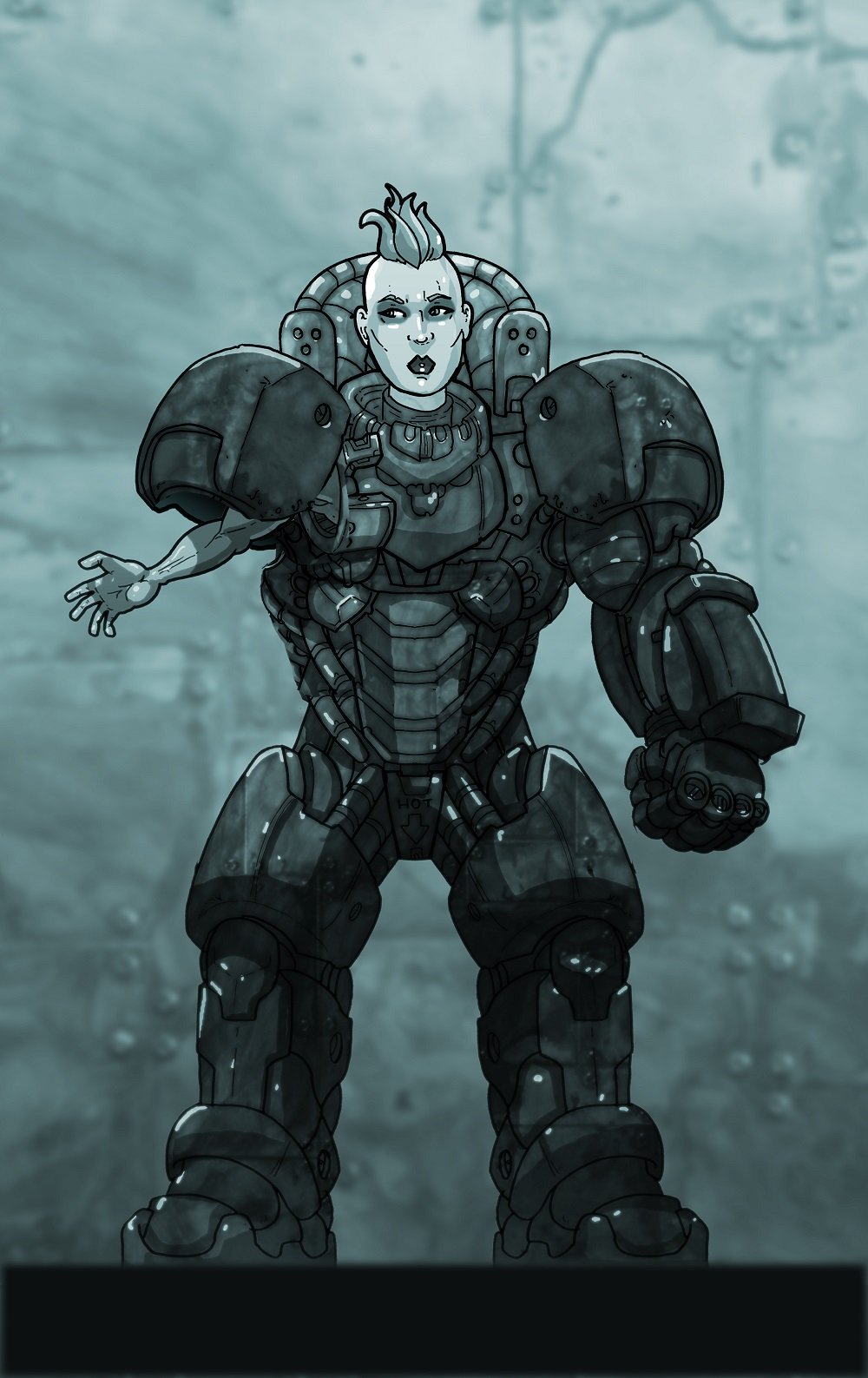
Powered Armor – Part 2: 21st Century Tech
Today’s continuation of our discussion of Powered Armor will focus around the existing technology in the 21st century and the limitations that this technology presents, as well as some conceptions of powered armor in popular media of the time. Lets get right into it shall we?
Powered armor and exoskeleton has long been the subject of fiction. Lesser known perhaps is that it has also long been the subject of scientific interest. Check out this little bit about project Hardiman:
Hardiman was the first attempt to build a practical powered exoskeleton, by General Electric in 1965. The machine was intended to allow the wearer to lift loads of 1500 pounds (680 kg) with ease.
The project was not successful. Any attempt to use the full exoskeleton resulted in a violent uncontrolled motion, and as a result the exoskeleton was never turned on with a person inside. Further research concentrated on one arm. Although it could lift its specified load of 750 pounds (340 kg), it weighed three quarters of a ton, just over twice the liftable load. Without getting all the components to work together the practical uses for the Hardiman project were limited.
Did you read that bit about “violent uncontrolled motion”… That is one of the key issues in the 21st century with computer controlled exoskeletons: namely that they could get into a loop caused by lag. Imagine this flow:
- I start moving my arm inside the suit
- As my arm moves it hits the stationary inside of the suit and triggers a switch
- This switch triggers the suit to “follow” my movement
- I reach the end of my desired range of motion and stop.
- The suit takes a bit to recognize that I stopped, and my arm presses against the other side of the enclosing suit
- Bingo, trigger the suit to move the other way… and repeat.
Lag in a situation such as this, as defined as the delay in a signal, could be fatal, especially if the suit was designed with a range of motion greater than that of the operator.
There are many other issues which prevented 21st Century technology from developing a true powered armor. They are listed and discussed in detail here, but in brief consist of:
- Power Supply – how to keep it running for more than a few hours
- Strength/weight of skeleton – strong enough to support the weight, light enough to not drain the power
- Actuators – the movement aspect, strong but lightweight and responsive pistons, motors, etc
- Joint flexibility – mimicking human joint movement from the outside is difficult, especially with rigid load bearing pieces.
- Power control and triggers – to fast and the user can get into that violent uncontrolled lag cycle, to slow and the user will feel like the suit is holding them back.
- Unsafe motions – making sure the suit can’t bend the operator over backwards and break their spine etc.
- Pinching and fouling – getting a piece of your arm caught between hard metal plates would be less than pleasant, and getting sand and grit in the precise machinery of the joints is also a pain.
That said, there are two prototypes which stand out among 21st century attempts and power assist armor. However, neither address the armor capacity, since both focus solely on enhancing speed, strength, endurance of the operator. Review the archives for the HulC and Sarcos exoskeletons.
In popular media, powered armor was a subject of numerous games, books, and movies. The illustration at the top of the article shows a common enough concept. It is of great interest to me the ways in which conceptions have mirrored our reality (I will discuss Glaucus tech in the next article). And especially the ways in which our reality has been informed, and perhaps predetermined, by the art and media of a past age.
[Art by Dan Butcher, creator of the excellent superhero comic Vanguard.]
